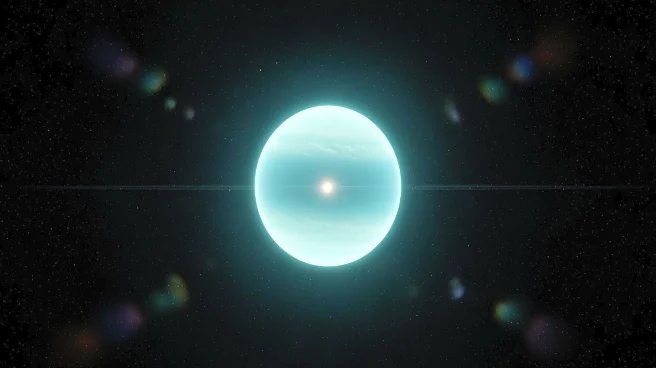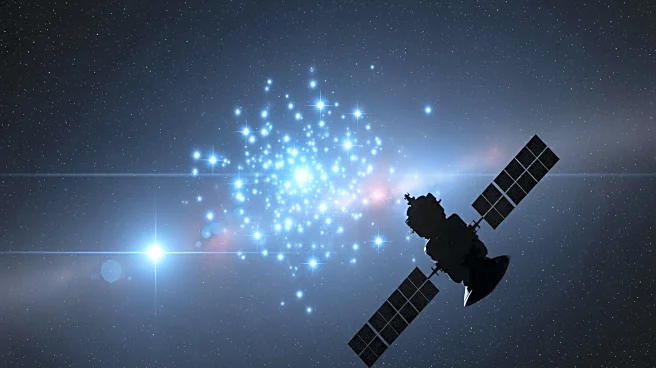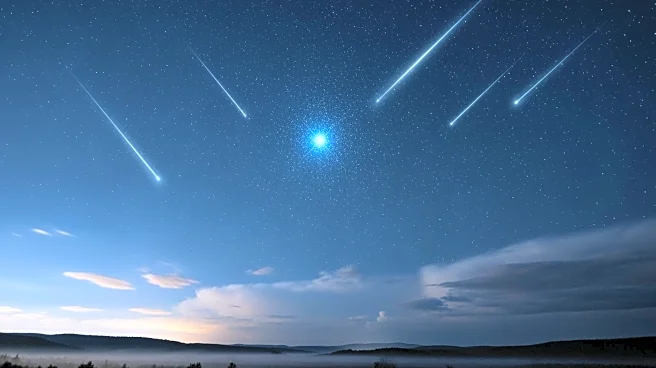What's Happening?
During the week of November 21 to 28, 2025, Uranus reaches opposition, providing optimal viewing conditions for the ice giant. Positioned in Taurus, Uranus is visible near the Pleiades star cluster. This
week also features a close conjunction between Venus and Mercury, visible in the predawn sky on November 24. Saturn's moons, including Titan, are observable as they transit the planet's disk. Additionally, deep-sky objects like the Silver Sliver Galaxy in Andromeda are highlighted for telescopic observation. The waxing crescent Moon offers opportunities to observe lunar features such as Lacus Mortis and the crater Burg.
Why It's Important?
The opposition of Uranus and other celestial events this week provide valuable opportunities for astronomers and enthusiasts to engage with the night sky. Observing Uranus at opposition allows for detailed study of the planet's characteristics, while the conjunction of Venus and Mercury offers insights into planetary motion. The visibility of Saturn's moons and deep-sky objects like the Silver Sliver Galaxy enriches the observational experience. These events can foster public interest in astronomy, promote educational activities, and encourage community engagement with stargazing. Understanding these phenomena contributes to broader knowledge of the solar system and the universe.
What's Next?
As Uranus continues its journey across the sky, astronomers may plan further observations to study its behavior and characteristics. The conjunction of Venus and Mercury will evolve, offering additional opportunities for observation. Saturn's moons will continue their transits, providing ongoing interest for sky watchers. The visibility of deep-sky objects and lunar features will persist, encouraging continued exploration of the night sky. These events can inspire future astronomical research and public engagement with celestial phenomena.












